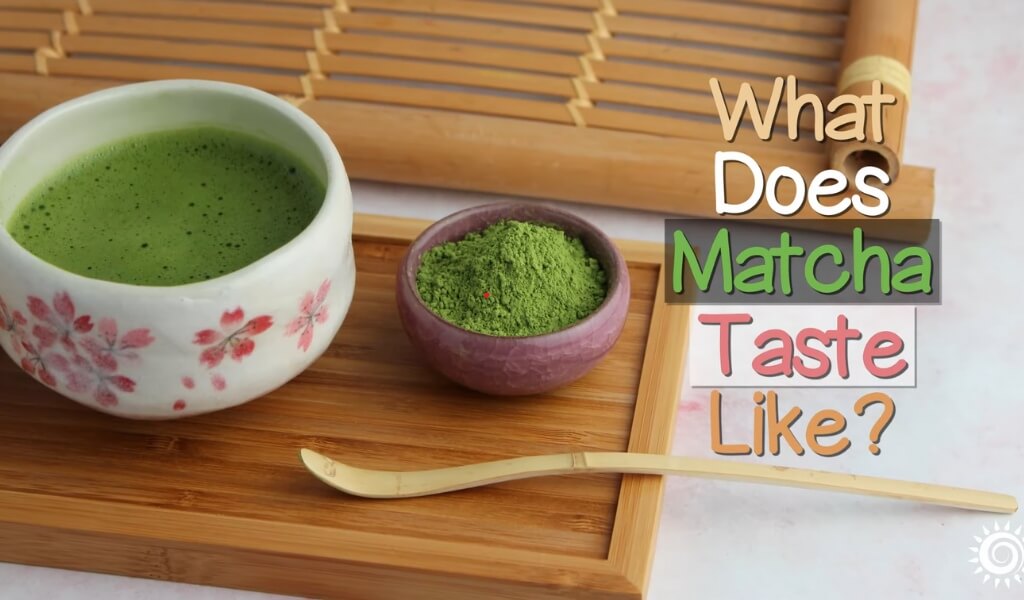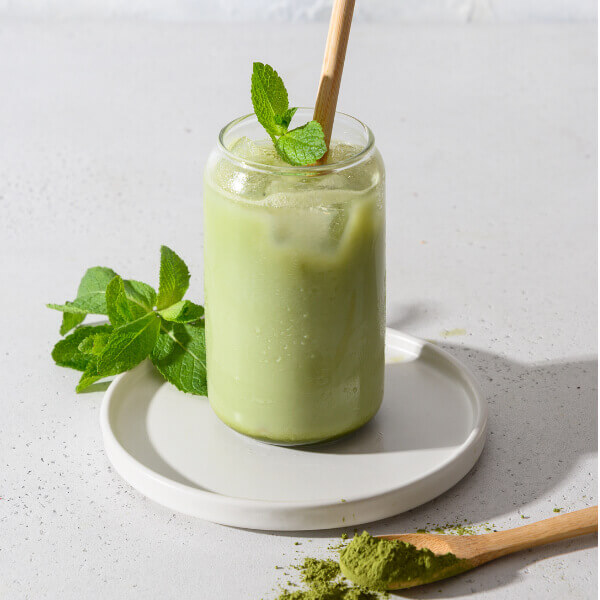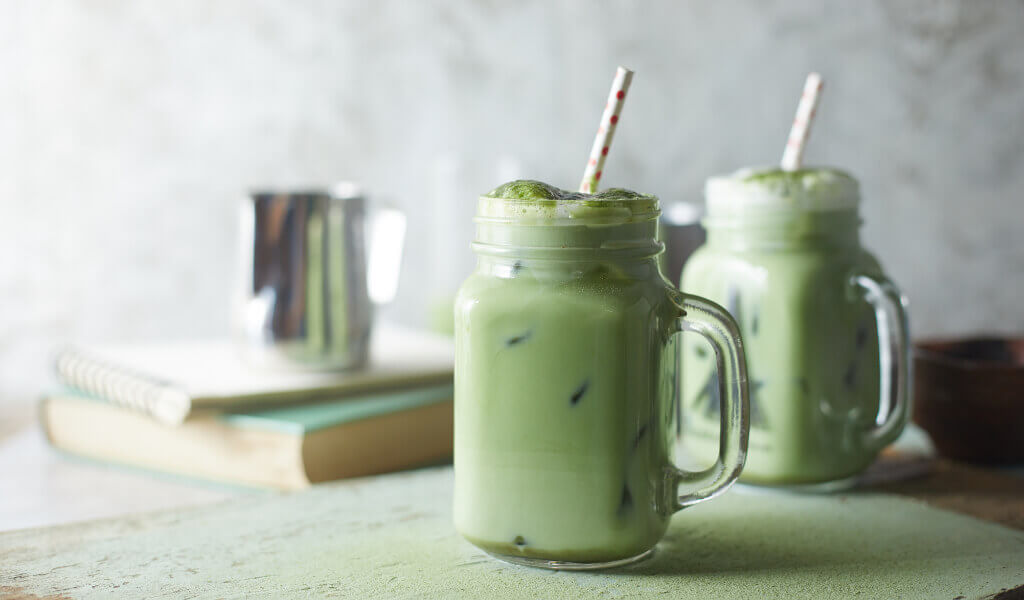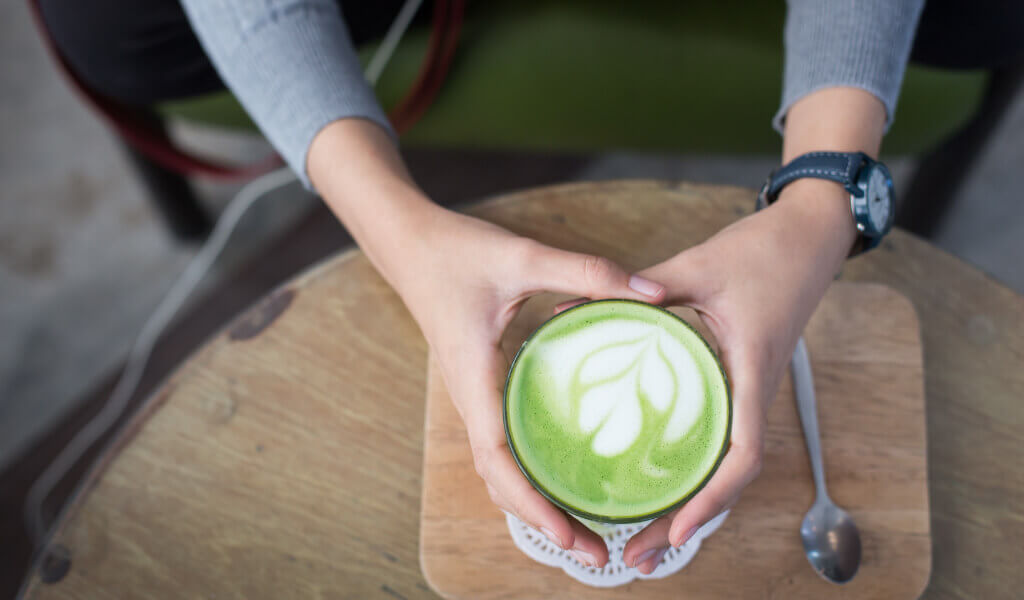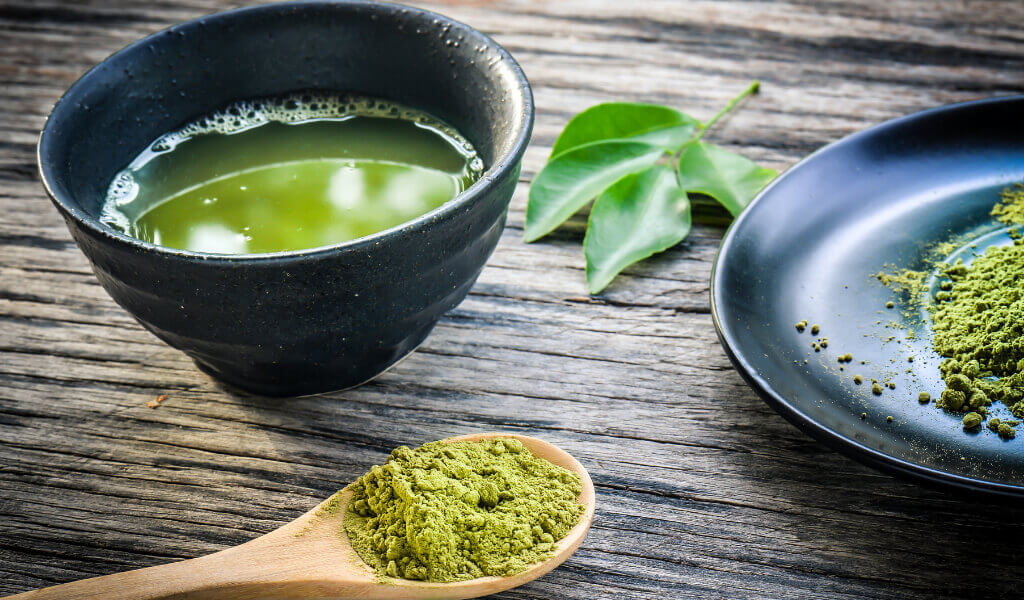Have you ever wondered, “what does Matcha Tea taste like?” or ‘What’s the flavor profile of matcha tea?’ Well, you’re not alone.
Flavored matcha, with its vibrant green hue and unique taste, often piques curiosity. But pinning down its distinct flavor can be challenging, especially for those new to this traditional Japanese tea.
Quotes of tea with You
“Tea stirs poetic feeling and inspires gentle reverie”
– Henri Mariage
Is Matcha delicious?
Absolutely! But not everyone shares this sentiment – and that’s perfectly okay! Taste, after all, is a deeply personal thing.
I chatted about this at a recent tea-tasting event with Harry, a fellow tea lover. While he appreciates the depth and complexity of matcha, he leans more toward the robustness of black teas. On the other hand, Alice, a newcomer to the world of tea, was absolutely smitten with matcha’s creaminess and unique flavor profile.
Then there’s Oliver, who enjoys his matcha as a latte – the smooth, vegetal flavor of matcha harmonizing with the sweetness of the milk. Each of these perspectives sheds light on the vast range of preferences and the subjective nature of taste.
What does Matcha tea taste like?
Ceremonial Matcha Organic Green Tea offers a rich taste experience, combining gentle grassy flavors, natural sweetness, a hint of bitterness, and a delightful umami finish. Its irresistible blend of flavors makes matcha a truly exquisite beverage.
Matcha tea taste has a distinctively rich and robust flavor. Unlike other teas, it is neither bitter nor overly sweet. Instead, it balances sweetness and bitterness with a creamy, almost buttery mouthfeel and an underlying umami depth. It’s an extraordinary experience that is both invigorating and calming simultaneously.
How does flavor matcha compare to other teas, you ask? Let’s dive into that next.
Comparisons of matcha tea flavor with other types of tea
Let’s put this into perspective by comparing matcha tea flavor with other types of tea:
| Type of Tea | Flavor Profile |
| Green Tea |
Light, grassy, sometimes with a bitter note
|
| Black Tea |
Strong, robust, often with astringent qualities
|
| Oolong Tea |
Varies from light and floral to dark and roasted
|
| Matcha Tea |
Rich, creamy, a perfect balance of sweet and bitter with an umami depth
|
While green matcha can have a grassy, sometimes bitter taste, and black tea tends to be robust, matcha tea stands out with its rich, creamy texture and perfectly balanced sweet-bitter flavor. Depending on its oxidation level, oolong tea can range from light and floral to dark and roasted. Yet, none of these teas capture the full-bodied, velvety, umami-rich experience of sipping on a well-made matcha tea. It’s truly in a league of its own!
Now, let’s peel back the layers and delve deeper into the complex flavor profile of matcha.
Read More: When best time to drink matcha tea?
Delving Deeper: An In-depth Look at Matcha Tea Flavor
Several key factors influence the flavor of matcha tea, each playing its part in creating the symphony that is matcha’s flavor profile.
Unpacking the Factors that Contribute to Matcha Tea Flavor
Let’s take a closer look at each one:
| Type of Tea Leaves |
High-quality matcha comes from the young leaves of the Camellia sinensis plant, shade-grown for about three weeks before harvest. This process amplifies the leaves’ chlorophyll and amino acid content, directly influencing matcha’s signature color and unique taste profile.
|
| Quality of Tea Leaves |
The grade of matcha matters too. Premium-grade matcha, made from the tenderest of leaves, typically presents a creamier, less astringent flavor than its culinary-grade counterpart.
|
| Grinding Process |
Transforming these leaves into fine matcha powder involves a slow grinding process using stone mills. This method helps avoid heat generation, which could modify the flavor.
|
Understanding How Different Preparation Methods Affect Matcha Tea Flavor
How you prepare your matcha can also change its flavor:
- Traditional Japanese Method: This involves whisking organic matcha powder in hot water (not boiling, mind you!) with a bamboo whisk. This extracts the optimal flavor from the matcha and creates a frothy, creamy beverage.
- Alternative Methods: Matcha isn’t just for tea – it can also be used in lattes, smoothies, and even baked goods, each introducing a unique twist on the matcha flavor description.
Ever wondered how to tweak or enhance matcha’s flavor? I’ve got some tips and tricks up my sleeve.
How They Can Enhance or Change the Matcha Flavor
While matcha’s distinct taste is remarkable, adding different flavors can offer new dimensions to your matcha experience.
When we consider sweeteners, for instance, they can greatly enhance matcha’s inherent sweetness while balancing its slight bitterness. Natural sweeteners like honey or agave syrup can lend their flavors, creating a more layered taste experience.
Then, there’s the world of spices. A dash of cinnamon or a pinch of nutmeg can introduce a warm, aromatic element to your matcha tea, making it even more comforting on a chilly day.
And don’t forget about dairy and non-dairy alternatives! These can profoundly change the matcha experience.
A splash of milk or a dollop of cream can soften matcha’s robust flavor, making it more palatable for those who find its taste too strong. Non-dairy alternatives like almond or oat milk bring unique flavor notes, adding an interesting twist to your matcha beverage.
Unfortunately, not all matcha is created equal. Let’s talk about the telltale signs of bad matcha.
What bad matcha will taste like
Let’s talk about a common misconception in the world of matcha. You might have heard or even experienced matcha that felt overwhelmingly unbalanced – one where the potency of the flavor was so strong it bordered on unpleasant.
This usually translates to matcha that’s too bitter or astringent or has an off-putting texture. About one-third of these ‘bad’ matcha encounters can be traced back to improper preparation or storage.
About a month ago, I encountered matcha that had been stored incorrectly. The tea’s usual vibrant flavor was marred by a noticeable bitterness that wasn’t there before. It was a stark reminder of how the care and handling of matcha greatly impact its taste.
Here’s something that might surprise you: ‘bitterness’ or ‘astringency’ in the context of matcha doesn’t automatically equate to a ‘bad’ tea. It all boils down to how the tea master has balanced these potentially challenging flavors to create a harmonious whole.
In Japanese, specific terms describe the ‘good’ and ‘bad’ in each taste, which often needs to be clarified in English translation. For instance, they have terms for ‘good bitterness’ and ‘bad bitterness’. In English, we typically view ‘bitter’ as a negative descriptor, missing out on the nuance.
An example of ‘good bitterness’ can be found in Superior Ceremonial Matcha. It has an intense start, which mellows out, leaving a pleasing aftertaste. However, there might be better choices for those who prefer a milder flavor profile, like what you would find in Cold Brew Jade Matcha.
The world of matcha is nuanced and complex. It’s all about finding the balance and understanding that bitterness is sometimes good. These subtleties make matcha such an interesting and rewarding tea to explore.
But don’t despair if your matcha doesn’t taste great. I’ve learned some ways to turn it around.
If your matcha tastes bad, how do you make it taste better?
If you’ve had a less-than-stellar matcha experience, it could be due to choosing the incorrect ‘grade’ of matcha. To clear up any confusion, let’s talk about the two general types of matcha grades commonly referred to outside of Japan: ‘ceremonial grade matcha’ and ‘culinary grade matcha’.
The ceremonial grade is what I recommend for drinking straight. It’s crafted with the utmost care, using only the finest, youngest tea leaves to deliver a smooth and rich flavor that’s truly enjoyable.
On the other hand, culinary-grade matcha is your go-to for cooking or baking. It has a stronger, more robust flavor that can hold its own when mixed with other ingredients. It’s perfect for adding that distinct matcha flavor to your cookies, cakes, or even your morning smoothie.
Remember, choosing the right grade for the right purpose can make all the difference in your matcha experience.
You might be curious about the best time to enjoy matcha and what to pair with it. Let’s explore that.
When and what to drink with matcha tea?
Ever wondered what might pair well with your cup of matcha tea? It’s not an uncommon question. After all, just like a good wine, certain beverages can enhance the matcha experience.
| Adaptogenic Matcha Cold Brew |
This preparation involves brewing matcha with tonics like ashwagandha, ginger, turmeric, and Asian mushrooms (especially shiitake, reishi, cordyceps, maitake, and lion’s mane). Fresh roots and quality mushroom powders are recommended, and you can sweeten the brew with a low-glycemic sweetener if needed.
|
| Part of a Weight Loss Strategy |
Consuming matcha promotes weight loss due to its natural compounds. It can increase thermogenesis (the rate at which calories are burned) and may improve symptoms of metabolic syndrome. Drinking it plain is recommended for the best absorption of its healthy compounds.
|
| In a Breakfast Chia Pudding |
Matcha can be added to a chia pudding recipe, where it blends well with the texture and flavor of the pudding. The recipe includes non-dairy milk, honey or agave, vanilla extract, matcha, and chia seeds.
|
| As a REAL Detox |
Drinking matcha can aid the body’s natural detox process. Consuming it 2 or 3 times a day can provide important vitamins and trace minerals that help synthesize enzymes involved in detox. The L-theanine in matcha can also improve immunity, natural detox, and stress response.
|
| As a No-Bake Energy Bite |
How to use matcha powder as an energy bite? Matcha can be used in “no-bake” recipes to avoid damaging its natural compounds through high heat. It’s recommended to use recipes that don’t overdo the sugar and avoid dairy milk.
|
| In a Nut-Milk Latte |
Matcha can be used in a latte with nut milk like almonds, cashew, macadamia, and coconut. These are great alternatives to dairy milk, which can inhibit the antioxidants in caffeine matcha.
|
| As a Pre-Workout |
Consuming matcha before a workout can boost performance by promoting blood flow, reducing oxidative stress, and encouraging fat burning.
|
| As part of a Green Juice |
Adding matcha to a green juice can enhance the health benefits and color of the drink.
|
| As a Nootropic |
Matcha contains L-theanine, an amino acid that can improve focus and modulate mood and neurochemistry when combined with the natural caffeine content in matcha. This can improve learning, memory, and attention without causing an afternoon crash or interfering with sleep.
|
After years of drinking matcha, I’ve devised a scoring system to evaluate its taste. Curious? Let me explain.
How do we score matcha on taste?
My journey with matcha has helped me create a unique way to evaluate its taste. Here’s how I score it:
| Initial Flavor |
Good matcha should balance sweet and umami, avoiding excessive bitterness or grassiness.
|
| Texture |
High-quality matcha has a smooth, creamy texture with no gritty or chalky feel.
|
| Aftertaste |
The best matcha leaves you with a sweet, lingering aftertaste that keeps you wanting more.
|
| Overall Experience |
Beyond taste, a great matcha experience involves appreciating the aroma, color, and presentation.
|
Remember, these are my guidelines. Everyone’s palate is different, and I encourage you to explore different types of matcha and find what you love most!
Final Thought
In my journey exploring the world of tea, I’ve discovered “what does matcha tea taste like?” – a mix of earthy sweetness and a hint of bitterness – is truly intriguing.
This powerful green powder not only offers a fascinating flavor but also brings numerous health benefits to the table, from boosting metabolism to enhancing mental focus. And let’s remember the fun ways to incorporate matcha into our daily routines! From refreshing cold brews to nutritious breakfast puddings, there’s no shortage of ways to enjoy this versatile tea.
I hope you’ve found this matcha exploration as exciting as mine. If you did, please share this information with fellow tea enthusiasts.
And of course, thank you for joining me on this journey. Let’s keep exploring together!
FAQs
What is an adaptogenic matcha cold brew?
An adaptogenic matcha cold brew prepares matcha that includes tonics like ashwagandha, ginger, turmeric, and various Asian mushrooms. It is a healthy and refreshing way to enjoy the matcha powder benefits.
How can I include matcha in a breakfast chia pudding?
Add 1-2 tsp of matcha to your regular recipe to incorporate matcha in a chia pudding. The matcha adds a sweet flavor and a lovely color to your chia pudding, making it a nutritious and delightful breakfast.
What are no-bake matcha energy bites?
No-bake matcha energy bites are a delicious way to add more matcha to your diet without damaging its natural compounds. Choosing a recipe that doesn’t overdo the sugar and avoids dairy milk is essential.
Is matcha sweet for multiple times a day?
Yes, Matcha possesses a delicate and lingering sweetness. Although it may not be as sweet as a matcha latte, pure matcha carries a gentle natural sweetness that harmonizes with the robust flavors found in this distinctive tea. Consuming matcha 2 or 3 times daily can aid detox, improve immunity, and provide important vitamins and trace minerals.
How can matcha be incorporated into our daily lifestyle?
Matcha can be incorporated into our daily lifestyle in various ways, such as in a cold brew, as part of a weight loss strategy, in a breakfast chia pudding, as a detox, in energy bites, in a nut-milk latte, as a pre-workout drink, in a green juice, or as a nootropic.
I’m Shanna, creator of Spiritea Drinks. I’m all about teaching people to grow their own food, tea, cook what they harvest, and eat with the seasons.

